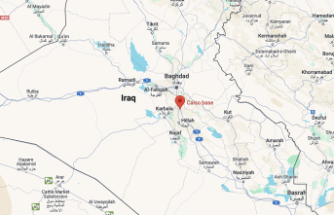In the case of the Schannenbacher Moor west of the Krehberg in the greater municipality of Lautertal, however, one is far away from a "classic" moor with gurgling water funnels over a thick layer of peat. Since a regulation action the original low moor lacks sufficient inflow. Since the meadows are extensively cultivated, rare plants, such as fever clover or meadow button, have been kept, which in turn attracted endangered butterfly species such as ant bluefin or checkerboard butterflies. This is why it was left at the 1975 designation as a nature reserve, which was meanwhile upgraded by integration into the European Conservation Program Natura 2000. < / p>
The nature reserve at an altitude of 500 metres includes so - called canyon and log rubble forests on a good quarter of its 16 hectare area. The predominant deciduous trees maple, elm or ash are rather atypical for the Odenwald, but their rocky subsoil is not. The entire space on both sides of the Lauter looks like a single open-air lapidarium, not only by the famous sea of rocks to the right of it, but also generously spread over the left-hand slopes from Knodener Kopf to the almost completely covered Heiligenberg a little behind.
Granites of magmatic origin < / h3>
The rock fields do not appear quite as massaged as in the trough-like sea of rocks, but are geologically closely related as 350 to 280 million year old granites of magmatic origin. The same forces also worked with erosion. In some places, the process, which has been accelerated since the ice ages, can literally be followed. Deep cracks in the rock cover are harbingers of the blasting work carried out over thousands of years by freezing water, at the end of which cleanly formed round pieces stand like in a sea of rocks. < / p> < p class="atc-TextParagraph"> The erosion on the Hohenstein above Reichenbach, one of the largest monoliths in the region, is impressive. Crevices, overhangs and holes make the 50-meter-long and 17-meter-high block appear so fragile that one fears for its stability. The attraction for climbers with hooks and rope can only increase. In addition to a wall near Breuberg, the Hohenstein offers the best ridges in the Odenwald.
Directions < / h3>
The passage between moor and rock begins at the bus stop Markt in Reichenbach in front of the parish church. Walk a few steps in the direction of travel along the Nibelungenstraße (B 47), which also offers parking, and turn right onto Knodener Straße following the yellow square and red N markings. It leads straight through a residential area and then left up the slope. Outside, it attracts even more, before you suddenly stand in front of the huge wall of the Hohenstein in a piece of forest. < / p>
After that it may proceed somewhat more moderately. First-alone with the N-in the right bend above a panoramic meadow sink, and on the other side again under beech and oak slightly ascending around the mountain Köppel. The scattered boulders give a premonition of the bizarre world of rocks at Knodener Kopf, which one approaches since a right-hand turn (there the blue line joins).
Date Of Update: 01 May 2021, 12:19











